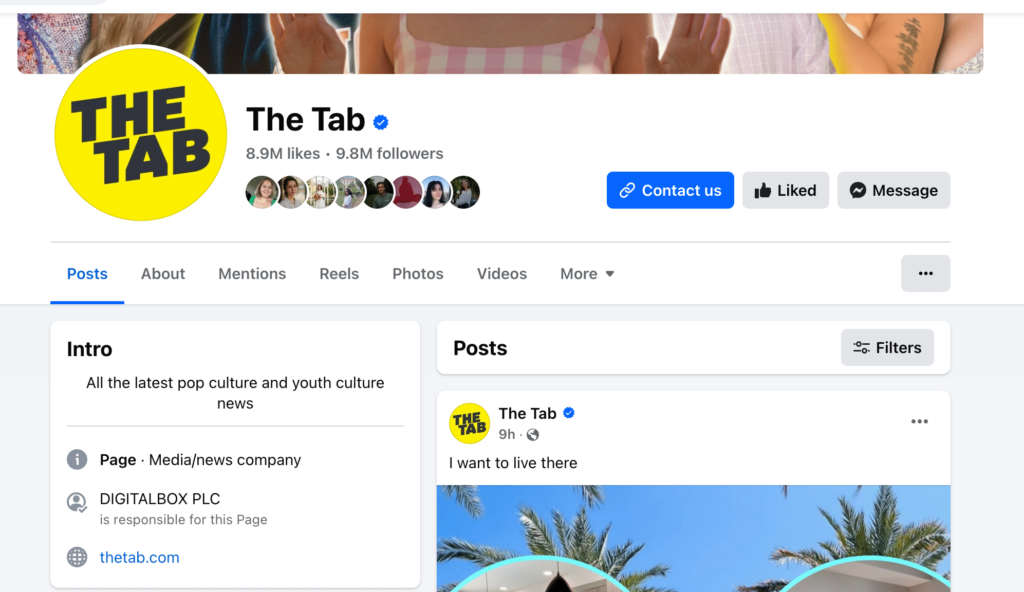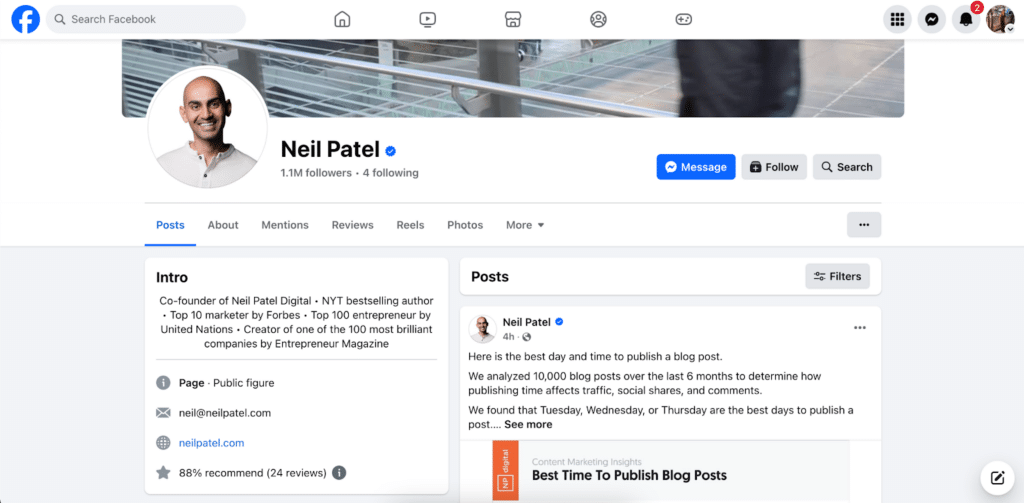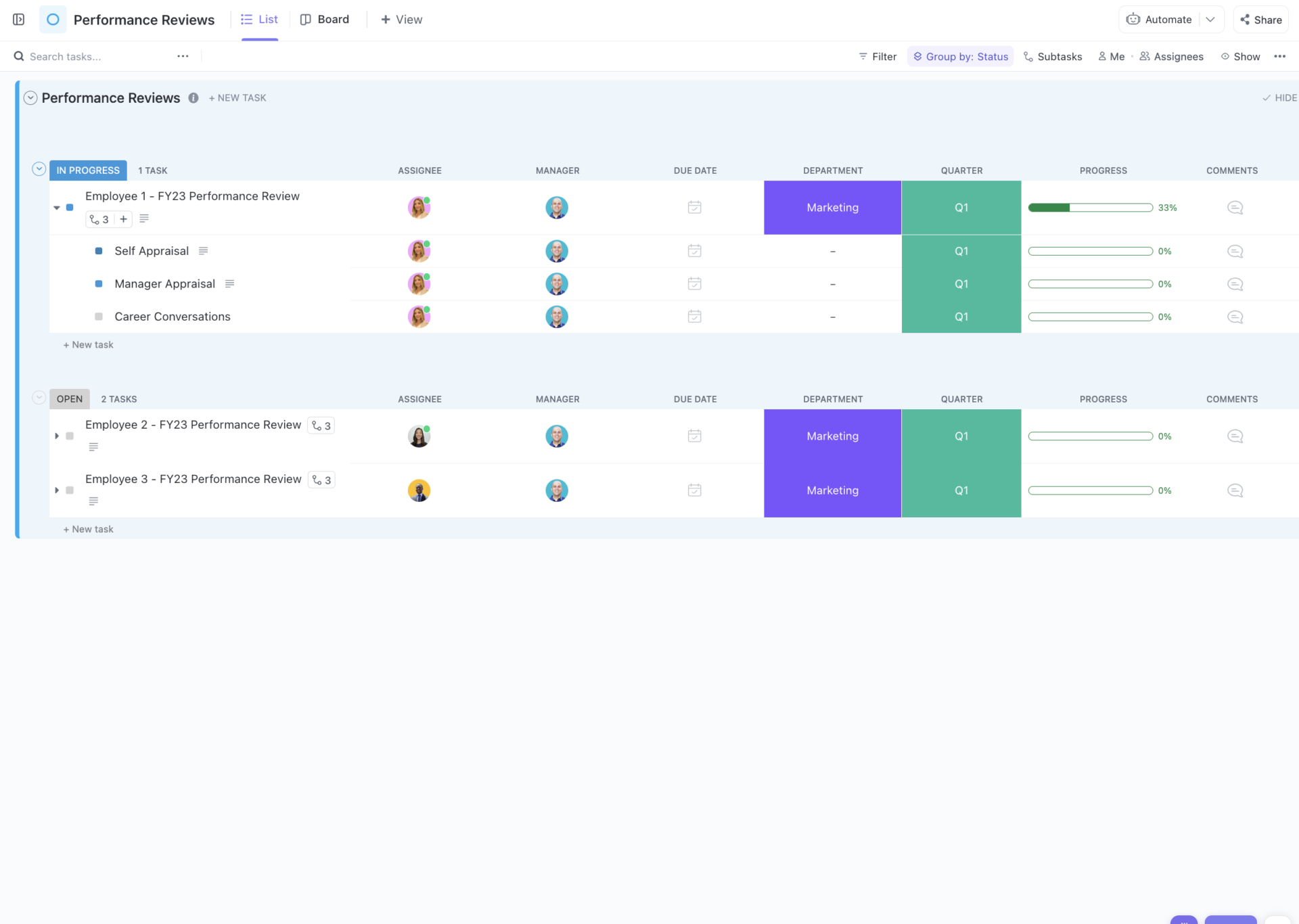What is Facebook search engine optimization?
Facebook SEO is the process of optimizing your business page and its content so it ranks higher in both the platform’s internal search and on external search engines like Google.
Just like traditional SEO for websites, Facebook SEO involves using the right keywords, creating high-quality content, and improving how your page is structured. This helps your page show up when people search for your business, products, or services, whether they’re using Facebook’s search bar or Google.
Done right, Facebook SEO can increase your visibility, drive more traffic to your page, and even boost engagement with your target audience.
9 SEO Facebook tips for increasing your page’s visibility
Facebook might not be the first place you think of when it comes to SEO. But it should be. With the right setup, your Facebook business page can rank on Google, show up in Facebook’s own search results, and drive real traffic to your website.
Whether you’re just setting up your page or looking to improve your current one, these tips will help you get seen by the right people.
Let’s dive into 9 practical ways to boost your visibility and make your Facebook SEO game stronger:
- Choose your Facebook page’s name wisely
- Don’t stick with the generic URL
- Carefully craft your introduction
- Don’t forget about alt text
- Use keywords in your content
- Link out to your Facebook profile
- Keep your business information updated
- Respond to your reviews
- Work out the right time to post
1. Choose your Facebook page’s name wisely
Your page name is one of the first things both users and search engines notice, so it needs to be clear, relevant, and easy to find.
When choosing a name for your Facebook business page, stick to your brand name and add keywords that reflect what you do. For example, Moo Moo’s Ice Cream Shop works well because it includes the brand (Moo Moo) and what the business offers (ice cream). This helps your page show up in Facebook search and in broader search engine results pages (SERPs) when people look for ice cream shops nearby.
Here’s an example of short bio from The Tab:

Avoid names that are too generic, too long, or too similar to existing brands. Not only can that confuse your audience, but it could also lead to legal trouble or poor visibility if you’re competing with better-established pages.
Using the right keywords in your page name is a small step, but a powerful one in your overall Facebook SEO strategy.
2. Don’t stick with the generic URL
When you first create a Facebook page for your brand, you will be assigned a default URL that is made up of a mixture of numbers, letters, and special characters. For example, ‘www.facebook.com/profile.php?id=123456789123456’.
To improve your page’s visibility, change the default URL into a unique web address – known as a vanity URL. Keep it short, but remember to include your brand name and any relevant keywords about your offerings (products or services). For example, ‘www.facebook.com/MooMoo-icecreamshop’.


(Image Source: Site Checker)
The words in your vanity URL serve as signals for Google to determine what your page is about, which will enhance your Facebook SEO efforts.
To create your vanity URL, you must change your Facebook username. Here’s how:
- Ensure you are on the page you want to edit (the profile picture will be in the top right-hand corner).
- Click on your profile picture, and find ‘Settings’ in the drop-down menu.
- On the left sidebar, find ‘Page setup’ (with a flag icon).
- To the right of where it says ‘name’ in bold, click the ‘View’ button.
- You will see your ‘name’ and ‘username’ (URL. Click ‘Edit’ to the right of your username.
- Write your desired username/URL, and click ‘Save changes’.
3. Carefully craft your introduction
Your Facebook page introduction is one of the first things people see. And it plays a bigger role in Facebook SEO than most brands realize. On desktop, the Intro section sits right above your business name, website link, and business hours. On mobile, it’s directly under your profile picture, making it a key touchpoint for potential followers.


(Image Source: Facebook)
This small section is an opportunity to connect with your target market, highlight your team members, and build your page’s credibility. Make sure to include region-specific keywords, your specific location, and anything that sets your business apart, such as awards, recognitions, or strategic partners.
A well-written intro, backed by smart keyword research, can help your page show up on search engine results pages (SERPs) and drive more traffic.
To make this easier, here’s a plug-and-play template you can follow when writing your intro:
📍 [Business Name] – Based in [City or Neighborhood], we offer [Main Product or Service]. Known for [Unique Selling Point or Award], our team helps customers [Main Benefit or Outcome]. Get in touch at [Website or Contact Info].
Example: “GreenBites Bakery – Based in Chicago, we offer fresh sourdough bread and vegan pastries. Known for our cozy vibe and custom cakes, our team helps customers start their day with something delicious. Get in touch at greenbitesbakery.com.
4. Don’t forget about alt text
When uploading images to your Facebook page, don’t skip the alt text. Facebook will automatically generate it, but that default version won’t help your Facebook SEO.
Adding your own alt text allows you to include relevant keywords that describe your image, improving accessibility and increasing the chances of your content being discovered in search results. It also helps Facebook better understand your image, which may enhance its visibility on the platform. It’s one of those simple but essential Facebook SEO tactics that make your visuals work harder for you.


Beyond SEO, alt text also supports accessibility, allowing people with visual impairments to engage with your Facebook posts. That means a better user experience and a broader reach, especially if you’re targeting multiple audiences across different social media platforms.
When done right, image optimization through alt text helps support your larger digital marketing and SEO strategy, improving visibility while also aligning with social SEO best practices.











